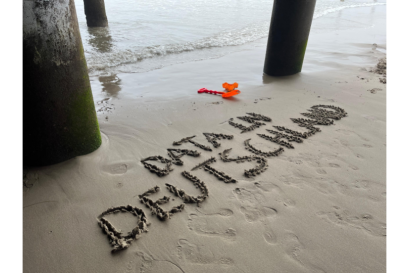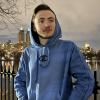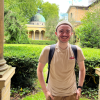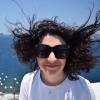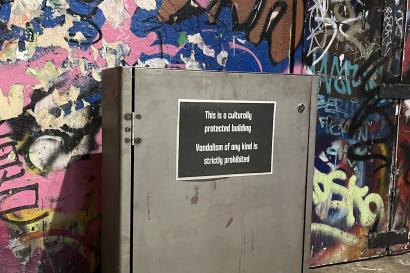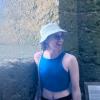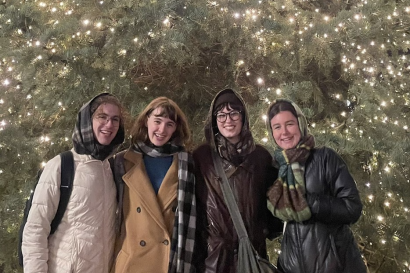When we think of resources in life, usually we think of essentials like food or water. Yet, I think time should also be included into one of the most important resources. We, as people, are continuously progressing forward in our lives, with no way backward. All we can do is maximize the time we have. For me, it is 1440.83 hours. That is how much time I have in Germany. May 28th to July 27th. A friend of mine said “Don’t remind me it is week six. It’s almost over.” However, I see it differently. I see it as a point of motivation to fall back on. I think about all that I still want to do with the time left. This brings us to the last topic for Data in Deutschland: Time. Here, I hope to present a minute-by-minute account of being abroad. All the highlights, lowlights, and minutiae between. The next section, “How it Works,” outlines the process behind the data, but if you are simply interested in seeing what went on during my time in week six of being abroad, skip to the next section labeled, “The Daily Life.”
How it Works
During week six, I tracked what I have been doing. It’s a seemingly impossible task to conceive, but I have broken it down into blocks. I am tracking on a basis of every 15 minutes. Whatever I am doing during the said block is what gets recorded. If I do multiple things during that 15 minute block of a day, I will record what I did the most of during those 15 minutes. This could lend itself to some “gerrymandering” where I do something for seven minutes and then do something else for eight minutes to make it seem as though I was only doing the latter. However, I have been careful to generally start things at the start of a new block (on the 0th, 15th, 30th, or 45th minute of an hour) to make the data as accurate as possible.
In order to digest what I do everyday, I devised a system of categorizing the points of data. Each block is given a respective category (and unique color). The categories are as follows:
- Gray: Sleeping
- Yellow: Eating
- Blue: Internship / Class
- Green: Outside Work
- Light Blue: Productivity
- Purple: Light Productivity
- Orange: Relaxation
- Pink: Social
- Red: Procrastinating
Some of the categories are easy to explain. Sleeping (gray) includes all forms of sleeping like in my room, on a bus, or even a quick power nap. Eating (yellow) involves the preparation or waiting for food at a restaurant, along with the consumption itself. Class / Internship (Blue) includes mandatory time within them, along with commuting to each one. This is different from outside work, which is time I personally give to doing homework or work that my internship requires from me between meetings. For scheduling purposes, this is an important distinction as times for class or meetings can’t change off my schedule, but I choose when I want to do the work for them.
Other categories have some intricacies. I originally started off with productivity (light blue), which include things I need to do like taking a shower, brushing my teeth, laundry, and checking emails. Then, there are productive-like activities like planning trips, going to the gym, reading a book, or going to a museum that don’t actually fit into my requirement of things that I must do. Neither do they fit into relaxation (orange). These are activities that are designed for me to unwind, like social media, YouTube, movies, or video games. So, I made a middle tier between those two called light productivity (purple). While some may argue going to a museum or reading a book would fall under relaxation time, I like to see them as things which enhance my thinking and not something like mindless scrolling.
Social (pink) indicates time spent with friends and family, in-person or online. This category takes priority over other categories. For example, if I went to a museum alone, it would count as light productivity. However, if I brought along a friend, it would trump that category and simply be social time. It would be great to create a system to have hybrid categories for situations like that or in the case of the “gerrymandering” situation I provided above, but it has the potential to get way too complicated way too quickly if I tried adding time between categories or made subcategories. Finally, there is procrastination (red), which is when I do something for too long. Primary, this comes from relaxation time. For example, I have homework to do. Before beginning, I proceed to scroll TikTok for what I initially say to myself to only be 15 minutes. Instead, it becomes two hours. It’s time wasted and is appropriately given the red color to symbolize the negativity I put on time being used that way.
Below is a picture of the sheet I was working out through week six. Each column represents a day of the week, starting with Monday, July 1st all the way until Sunday, July 7th (The number next to the day of the week is my happiness score related to each day but in order to stay on topic with the discussion of time, it will not be discussed further). Then, the rows represent the time at each block of the day starting naturally at 12:00 A.M. and then going until 11:45 P.M. Each cell is given a concise description, categorized with one of the 9 colors mentioned, and merged to show how long the event lasted for. If you would like to see a better version of the sheet, here is a link to the sheet itself.
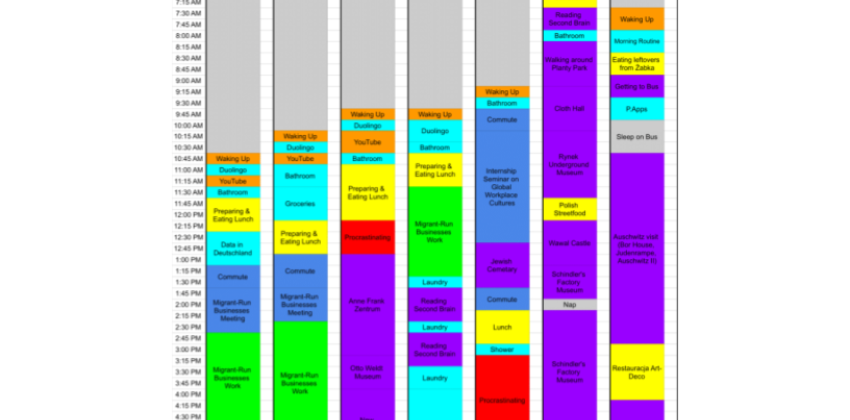
The Daily Life
While week six technically began at 12:00 A.M. on July 1st while I was awake talking to a friend, I like to think of when I woke up on that Monday morning as the true starting point. There, at 10:30 A.M., I began my morning routine. Waking up constitutes a few things, like checking my phone for messages or notifications, opening up the blinds to get some sunlight, stretching, or just thinking as I lay in bed. Then, my day really begins as I continue forth on my 345-day streak of practicing German. Finally, I will watch some YouTube in the morning. I find waking up and resisting the urge to go back to sleep to consistently be one of the most difficult parts of my day, so I like to reward myself. After spending some time in the bathroom brushing my teeth and taking a hot shower, I make my way to the kitchen for some food. Generally, this consists of eggs or anything else I still have in the fridge, or if I’m out like I was on Tuesday, I’ll walk over to Netto and then begin eating with the food I just bought. All of this is boilerplate stuff to my day, it seldomly changes from day to day and takes about two hours.
On Monday in particular, my internship has a meeting I commute to. I’ll either ride my bike or use public transportation, depending on how I’m feeling. While taking the S-Bahn (train) gives me time to look at my phone and riding my bike is a fun way of getting some exercise and feeling the morning breeze. We generally have our meetings at 1:30 P.M. to go over the work we have done in the last week and the work to subsequently follow in the coming days. Then, we are free to leave or continue working. Usually, I continue working there because it is good to bounce ideas off people for our tasks during the week. It’s not a typical internship where I clock in and clock out, but one which assigns work I have to complete. For this week in particular, the workload was light but it was an essential component of the process. We were finalizing our coordinates of addresses after we ran them through a program to find their latitude and longitudes. Usually, I will work anywhere from 20-24 hours in a week, but for this particular one, it was only 10 hours.
Without working as much as I usually do, this week was able to be one of my most action-packed yet. After returning to my room at 7:30 P.M. and working on my second issue of Data in Deutschland, eating dinner, and calling a friend, I spent over two hours preparing for my trip to Kraków, Poland. Having not traveled much yet, I was making it a point to travel this month as my remaining time dwindled. So, I spent a lot of time on TripAdvisor looking at things to do, FlixBus (similar to Greyhound Bus Co.) for transportation, and HostelWorld for where to stay. By 1:15 A.M., it was time for my nighttime routine. I brushed my teeth and put out my clothes for tomorrow.
Tuesday came after eight and a half hours of sleep and then my morning routine commenced. I biked to my internship and then left around 5:30 P.M. Now, it was time for Tuesday’s highlight which was traversing to the Computerspielemuseum (video game museum) with a friend. We had been interested after hearing about it, given both our shared childhood experiences playing them for hours. Though, this museum went much further back than any of the games we had ever played, so we got a history lesson out of it and got to even play some of the games on display. Afterwards, we both went to Burgermeister for some hamburgers at 8:00 P.M., before I returned back to my room to call my Dad. Night was when I did most of my calls to friends or family since I am six hours ahead of them. I found calling wonderful to do, as it kept me connected to my roots back at home.
Wednesday morning demonstrated a case of procrastination. After my morning routine, I kept watching a YouTube video as I walked out of the kitchen and sprawled out on my bed to consume more videos about the current Euros (UEFA European Football Championship) and then previous Euros. Forty-five minutes isn’t going to make or break my day, but I try to reduce my consumption of mindlessly consuming content as it detracts from what I really want to do that day. Two of the biggest reasons for going to Kraków include connecting with my Polish heritage and also learning more about Germany’s past. It felt like an injustice to have the highest of highs living in Germany, without seeing the lowest of lows (the Holocaust). Before I went to Kraków, I wanted to visit some of the exhibits I had not gotten around to yet. So, I visited the Anne Frank Center, Otto Weidt Workshop for the Blind Museum, and the New Synagogue. I then grabbed some dinner with friends and played ping pong together. It’s a consistent end-of-day tradition, as we unwind together.
Thursday was one of my more productive days as I made the most out of my 24 hours that day. After my morning routine, I did some more work for my internship before getting my weekly load of laundry in. In between, I was reading a book I had gotten recently called, “Second Brain.” It outlines the process behind using digital notes as a second brain I can rely on to remember things. After my laundry finished at 3:45 P.M. I finished up work on my second issue of Data in Deutschland, before taking a short break and then starting work on my internship class. We get weekly readings and at the end of it, complete a journey entry which serves as a reflection of the last week at my internship. Then after eating some frozen Hawaiian pizza and grapes, I watched Schindler’s List. I had only planned to watch half of it and save the rest of tomorrow but it was so captivating that I stayed up until 3:00 A.M. to watch it.
Friday morning is when my Internship Seminar takes place, where we had a networking event as people came in to talk about their careers in Berlin. I filled in the rest of my time that afternoon packing up for my trip to Kraków, reading, and then seeing the end of Germany’s run in the Euros after they lost to Spain 2-1. Since Spain went on to win the Euros, it felt good knowing it took the best team to eliminate Germany. From there at 8:45 P.M., I made the commute to Berlin-Brandenburg Airport to board my FlixBus for Kraków. It was an eight hour bus ride, but it hardly mattered. I brought a neck pillow, fell asleep in Germany, and woke up in Poland. It felt like a magic trick. This is my recommended way of traveling far on a budget, as FlixBus is affordable and you negate the need for a Hostel.
After arriving at 6:00 A.M., I spent the day maximizing my short amount of time in the city. While I would have two full days, time can be deceiving as it sneaks away from you if you’re not paying attention. I checked out Kraków’s Old Town, the hub for city life. Then, after getting some souvenirs at the Cloth Hall where local vendors reside, I went on a museum tour from 10:00 A.M. to 6:00 P.M.. It first started with seeing authentic Kraków, including the Rynek Underground Museum which outlined medieval Poland and then the Wawel Castle which is a product of the time. Then at 1:00 P.M., I began a pair of museums based on Jewish history. This included seeing Schindler’s Factory, something I could appreciate much more since I saw the movie two days earlier. However, the factory primarily focused on the history of occupied-Poland during the war, with little information about Oskar Schindler's heroics. Then, I went to the art display at the Galicia Jewish Museum to see pictures of Jewish history. At 6:00 P.M., I got awesome perogies from a local food truck. I spent the rest of the night renting a bike to see more of Kraków and then checking into my hostel, the Dizzy Daisy.
All of this week was crescendoing into Sunday; I had been seeing more and more of the Jewish history in Berlin and Kraków in preparation for today. The following morning, I woke up tired but absolutely not willing to go back to sleep. Today was too important. I checked out of my Hostel before making the trek to Oświęcim. Before I knew it, my heart fell to my stomach when I recognized the entrance gate out the window. I was at Auschwitz, one of the darkest chapters of human history. It was sobering, meticulously walking through each part of the camp. There was a Zyklon B container (the poisonous gas) at the Bör sub camp gas chamber. There was the boxcar at the Judenrampe, where people were inhumanely put in for transportation. There was the railway that led 1,100,000 to their death in Birkenau. Then, there was the sign at the infamous “Arbeit macht Frei,” (Work Sets You Free) in front of Auschwitz. It was a prolific reminder of Germany’s history. I spent the rest of the day contemplating what I had seen, before boarding my FlixBus and returning to Berlin.
I would recommend others do the same if they plan on visiting Berlin, it is too important to neglect.
Analysis
It’s amazing just how much can happen within 168 hours in a week. Illustrated below is a breakdown of the nine categories I measured through week six. Sleep towers over the rest, as I slept roughly 7.6 hours a day, which is less than the recommended eight hours (33%) a day. Classwork and my internship made up about 10.9% of my time, about 2.6 hours a day. Then there is eating, which is about two hours a day. That is roughly 12 hours a day that is absolute. There is no getting around the time I have to spend eating, sleeping, and working. Though, the beauty in this chart is the other half of the week. As I broke down, I was able to accomplish an expansive list of things, which seems to demonstrate just how amazing each week of life abroad can be. I was able to learn practical skills at my internship, hang out with great people in the program, and go to plenty of museums covering vital topics.
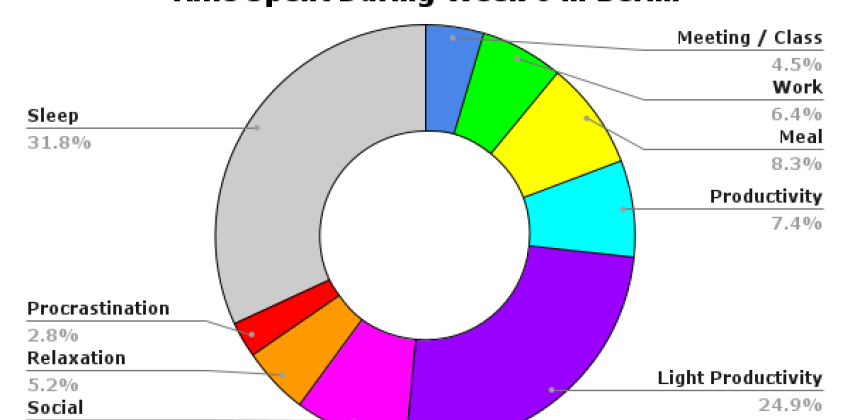
Last year when I was making the decision to go abroad, it was between that or staying at home. During this brief week of my life, I did not foresee living out so many moments and enriching myself with so much delicate history while abroad. While I could not have fully known it then, I now know I made the right choice (and I avoided a heat wave on the East Coast of the United States). However, this is just one week that I was able to analyze this issue. There is great insight at the analysis of the weeks before and after just this one. For my next and final issue of Data in Deutschland, once I return from my experiences abroad, I will bring it all together. I will have collected two months of data on my three topics of interest: happiness, money, and of course, time. There, I will try to make sense out of this whole journey of a lifetime. Bis dann!
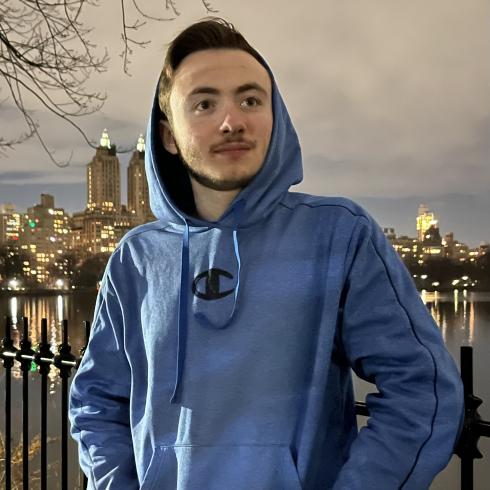
Jason Lebofsky
Hi there, I’m Jason. I’m a Junior Data Science major at Commonwealth University Bloomsburg. I enjoying running my video game club at my campus and playing ultimate frisbee. Back at home in Philadelphia, I like relaxing with my tortoise Merle.
